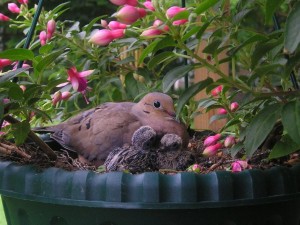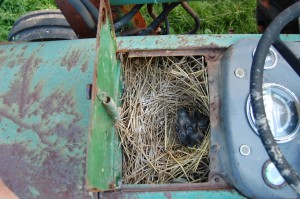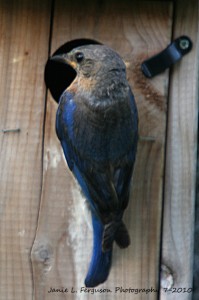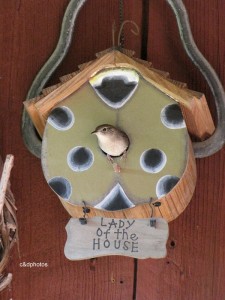Helping Nesting Birds with Food and Shelter

Many plants and flowers provide fruit that birds use to feed themselves and their babies. Cedar Waxwings, for example, nest much later in the summer than other birds because they like to eat fruit, and it is more likely that fruit will be ripe later in summer.

When female birds are laying eggs, they need more calcium to create strong shells that will protect their young. What’s the best source of calcium? Broken-up eggshells from the eggs in your refrigerator work just fine! After rinsing any yolk residue out of the shells, crush them in a tray and see if the birds come pick them up and carry them away. Some birds use clay or grit to obtain their calcium from their natural environment. Birds also like to collect feathers to line their nests, so you can start a collection of feathers you’ve found outdoors and put them all out one day to watch them get carried away for re-use!

Nestboxes
‘Cavity-nesting birds’ like different boxes to nest in, depending on their size. You can build nestboxes for birds as different as owls, bluebirds, certain ducks, kestrels, and other species! Another great citizen science project here at the Lab of Ornithology, NestWatch, works very closely with nesting birds, and has fantastic tips and learning aids about nestboxes, among other things. Here are some helpful links from the NestWatch program regarding nestboxes:
- Nestbox plans: Be sure to check out the sections on protecting from predators and dealing with invasive competitors.

- Features of a good nestbox: If you do decide to use kits instead of building boxes yourselves, please make sure that they are good for birds. You’ll want to make sure they have proper ventilation, no perches by the entrance hole (they often help predators access the nest), a sloped roof, drainage holes, thick walls, and a tight-fitting roof that does not permit water to enter the box.
Are you interested in learning even more about nests and how you can help build our knowledge of birds’ nesting behavior? Then we encourage you to sign up with NestWatch and monitor nests in your area. If you’re interested, join them now!